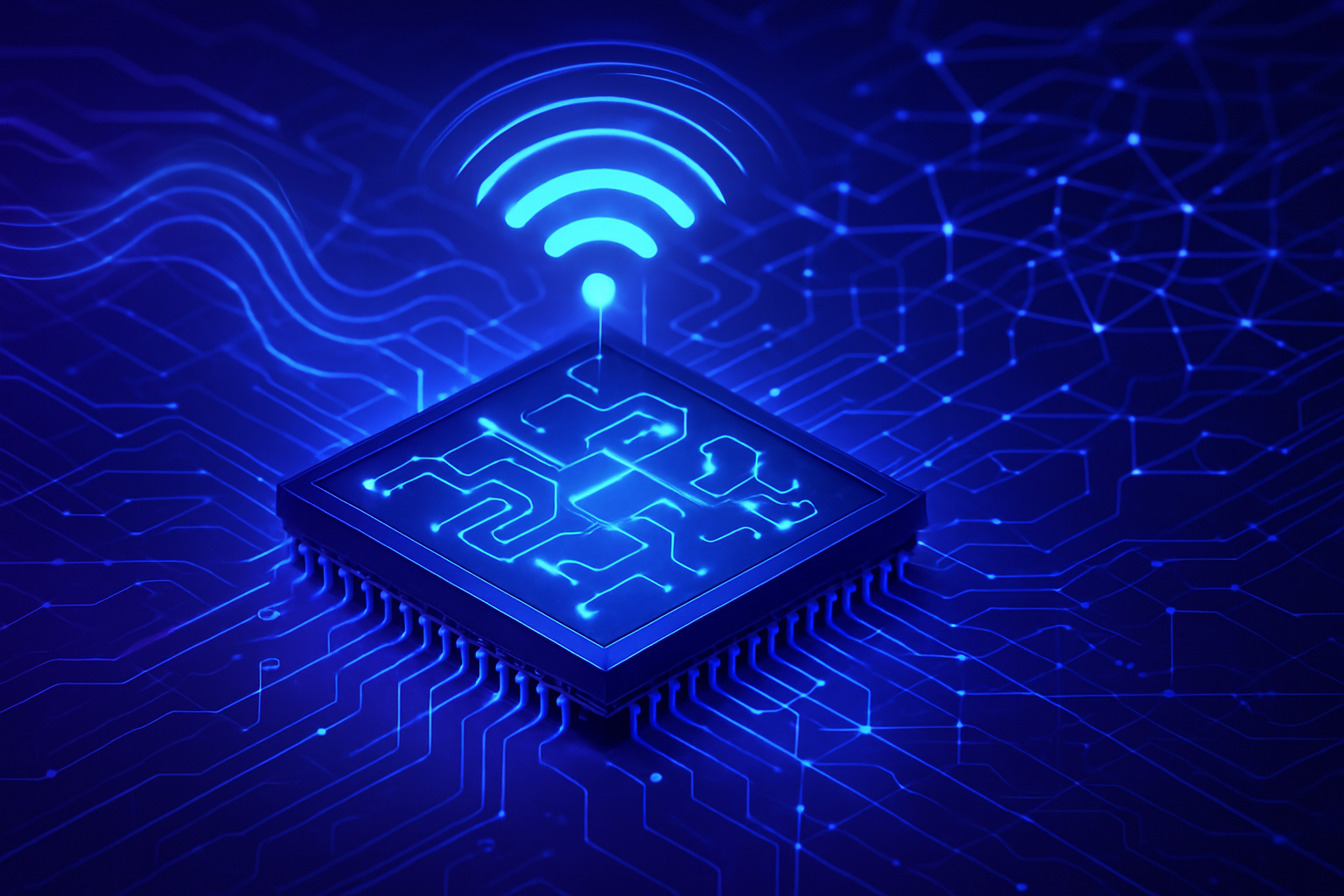The *future of wireless communications* relies on optimizing bandwidth management. *6G* will require a radical evolution of signal processing technologies. A major innovation is emerging: a photonic processor is revolutionizing wireless signal processing. This technological advancement allows for *reducing latency* and improving performance at unmatched speeds. The increasing demands for *bandwidth* pose complex challenges for engineers. This new architecture, dedicated to signal processing, could permanently alter our interaction with the *digital world*.
MIT Technological Advancements
Researchers at MIT have developed a photonic processor capable of transforming wireless signal processing for future 6G technologies. This device uses artificial intelligence principles to dynamically manage the radio spectrum, aiming to reduce latency and optimize performance.
Innovative Hardware Accelerator
The new hardware accelerator, designed for wireless signal processing, stands out with its ability to perform machine-learning calculations at remarkable speeds. This photonic processor manages to classify wireless signals in just a few nanoseconds, thus bridging the gap to applications requiring real-time processing.
Superior Performance
Compared to digital alternatives, this device operates nearly one hundred times faster while achieving a classification accuracy of 95%. The flexibility and scalability of this solution allow it to be used beyond signal processing, impacting various fields such as autonomous driving and health monitoring.
Energy Dimension
This device is found to be less energy-consuming than its digital counterparts. The design of the photonic processor, smaller and less expensive, represents a significant advantage in a context where bandwidth demand is skyrocketing. This energy efficiency is crucial, especially for future applications such as cognitive radios.
Specific Architecture
The MAFT-ONN (Multiplicative Analog Frequency Transform Optical Neural Network) model represents a major advancement. This novel architecture processes all data in the frequency domain, optimizing machine-learning operations. This process reduces hardware needs, facilitating scalability and compactness.
Futuristic Applications
The photonic processor could not only transform wireless signal processing but also revolutionize other technological domains. For instance, it could enable autonomous vehicles to react instantly to environmental changes, making interaction with the outside world smoother and safer.
Investments and Perspectives
This research has received significant support, particularly from the U.S. Army, the Air Force, and MIT Lincoln Laboratory. Future work aims to incorporate more complex learning structures, open to advanced modeling such as transformer models, further enhancing computational capabilities.
The economic and technological implications of this innovation are significant. Companies and data centers could benefit, alongside potential integrations into modern communication systems, as described in an article on STMicroelectronics’ developments to optimize data centers.
For more insight, discussions around electronic chips at Mobile World Congress also highlight the importance of new technologies, positioning this advancement within a broader dynamic.
Frequently Asked Questions
What is a photonic processor?
A photonic processor is a device that uses light signals to perform data processing operations. In the context of wireless signals, it allows for data processing at the speed of light, significantly improving communication speed.
How can a photonic processor improve wireless signal processing for 6G?
It enables real-time classification and processing of signals, thereby reducing latency and increasing performance compared to traditional digital-based methods.
What advantages does a photonic processor offer compared to digital processors for 6G applications?
Photonic processors are typically faster, more compact, less expensive, and more energy-efficient than their digital counterparts, making them ideal for demanding applications like 6G.
What is the classification accuracy of signals with a photonic processor?
Research shows that photonic processors can achieve a classification accuracy of about 95%, which is comparable to the best digital alternatives.
What types of 6G applications can benefit from a photonic processor?
Applications include cognitive radios optimizing data rates, autonomous vehicles requiring instantaneous reactions, and medical devices such as intelligent pacemakers.
How does the photonic processor handle real-time data processing?
It uses an optical neural network that processes data directly in the frequency domain, enabling efficient and rapid execution of machine learning operations.
What challenges have been encountered in developing photonic processors for signal processing?
Researchers have had to customize machine learning frameworks to adapt to the physical characteristics of optical hardware and maximize its efficiency in signal processing.
What is the processing speed of a photonic processor for wireless signals?
A photonic processor can perform computations in just 120 nanoseconds, making signal processing significantly faster than digital devices that take microseconds.
Are there future research plans regarding photonic processors?
Yes, researchers plan to extend deep learning architectures to include more complex models and add multiplexing schemes to increase the capacity of photonic processors.






